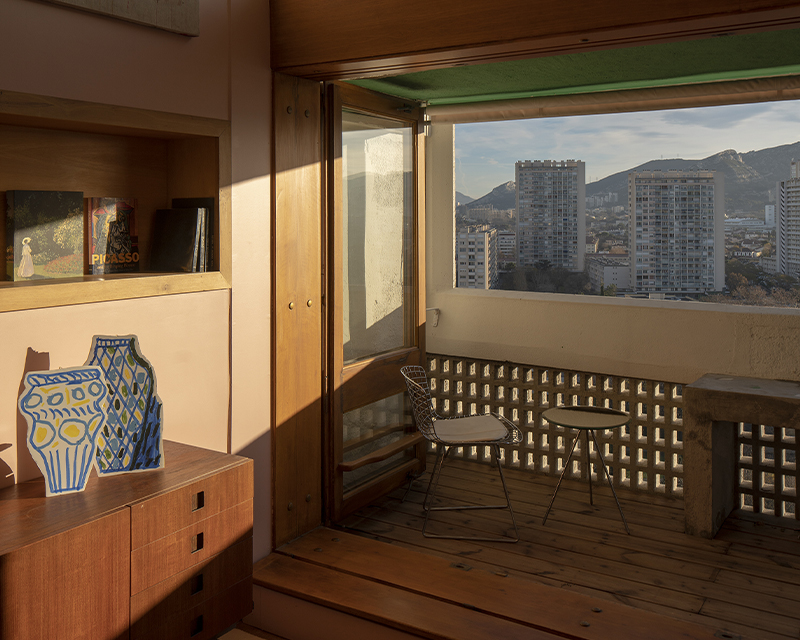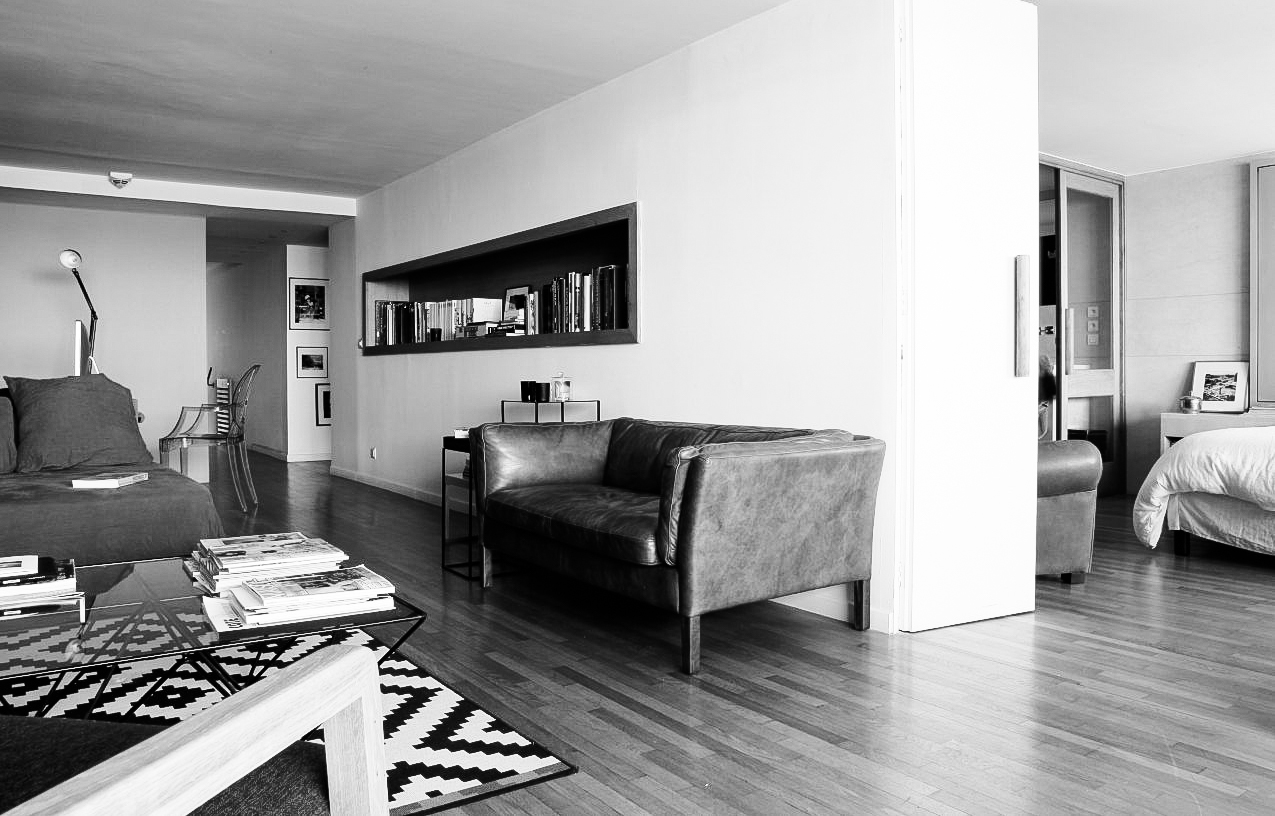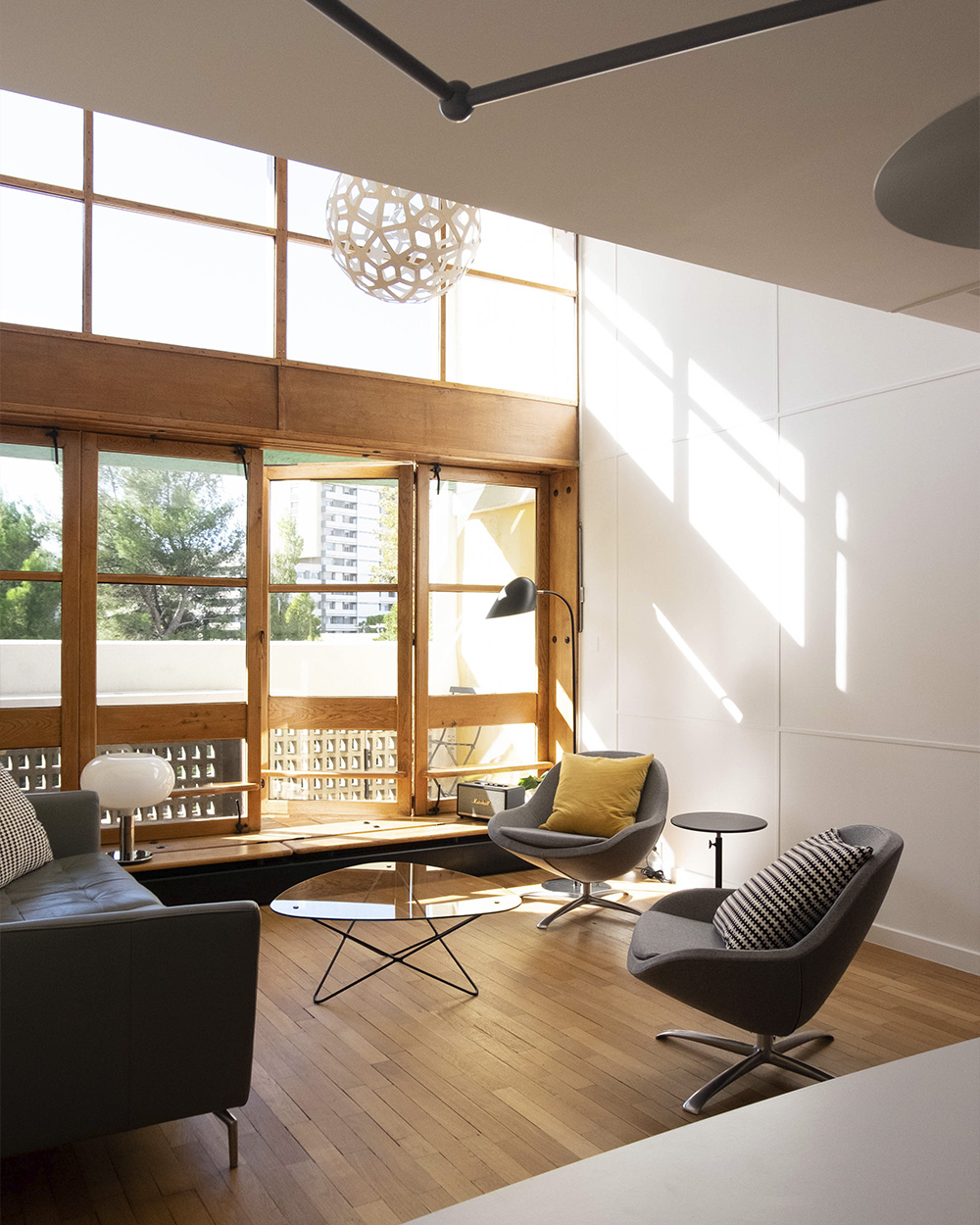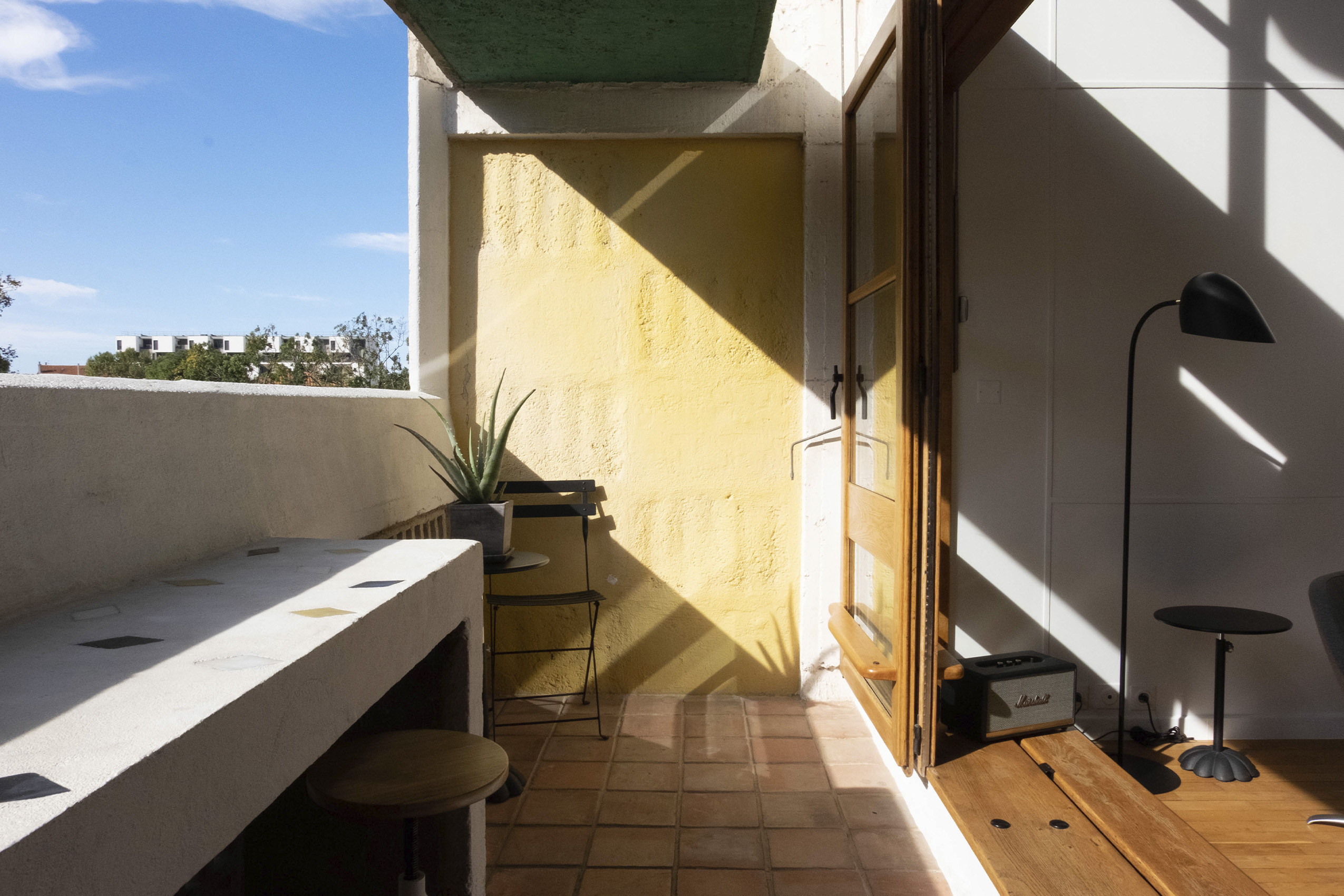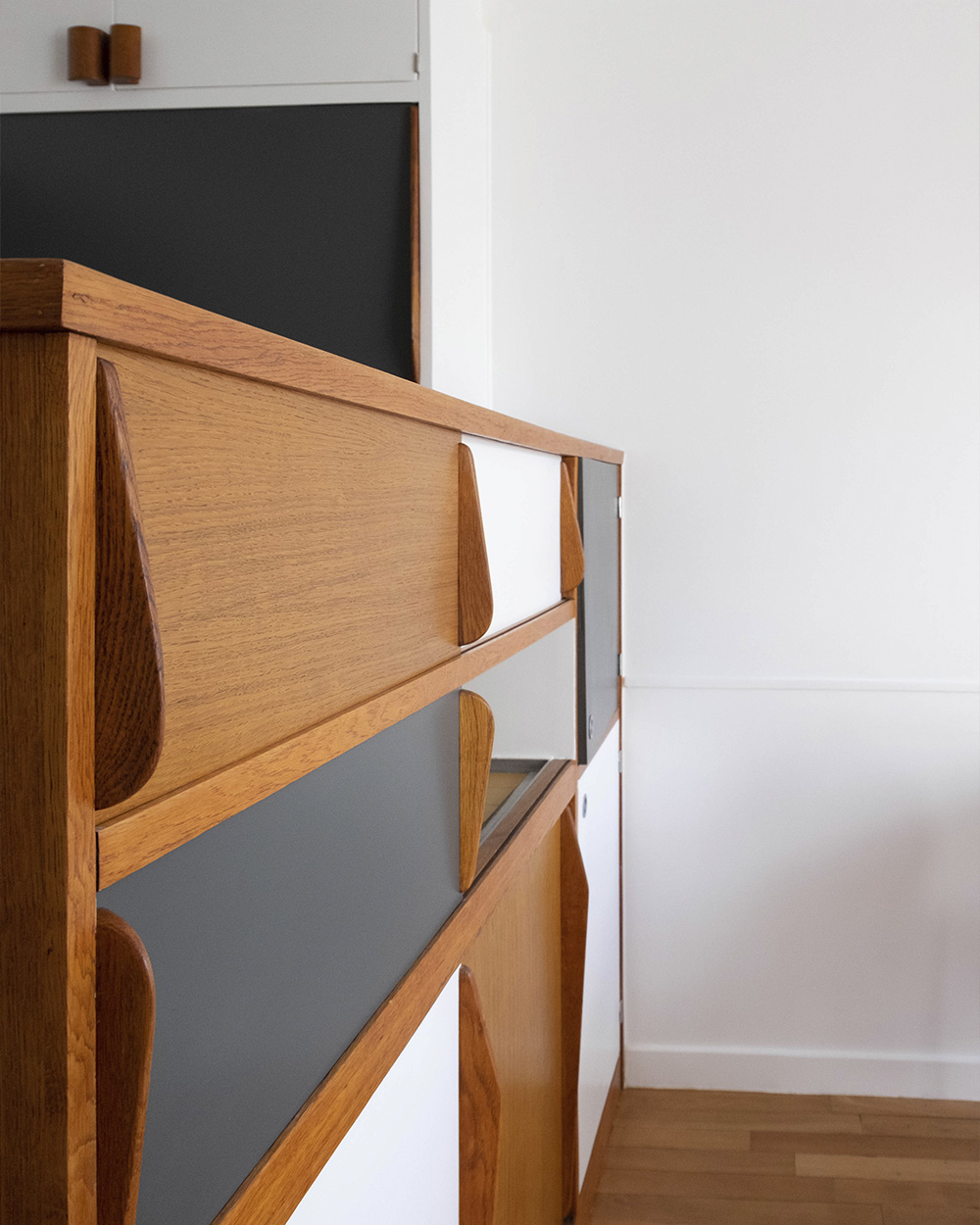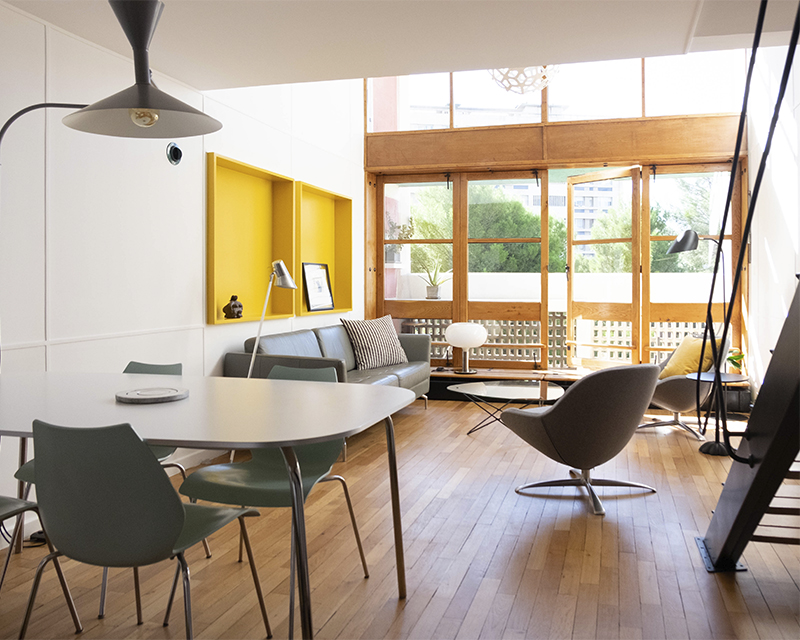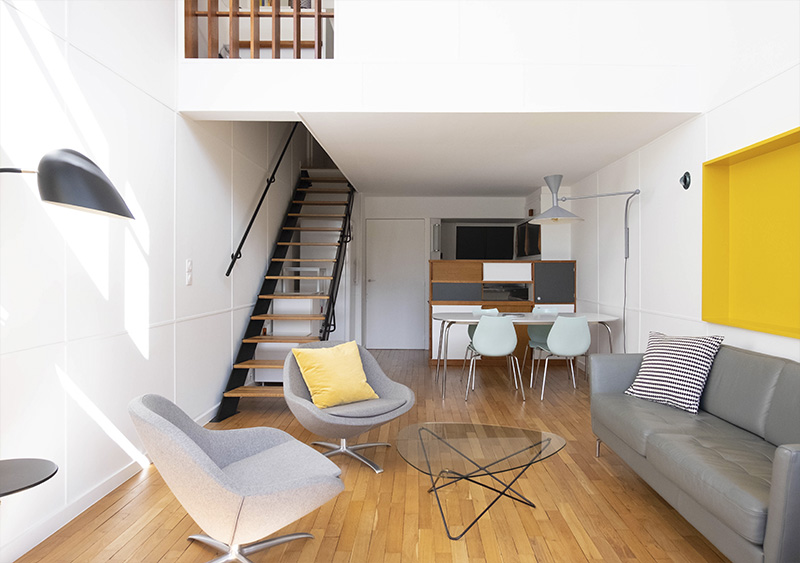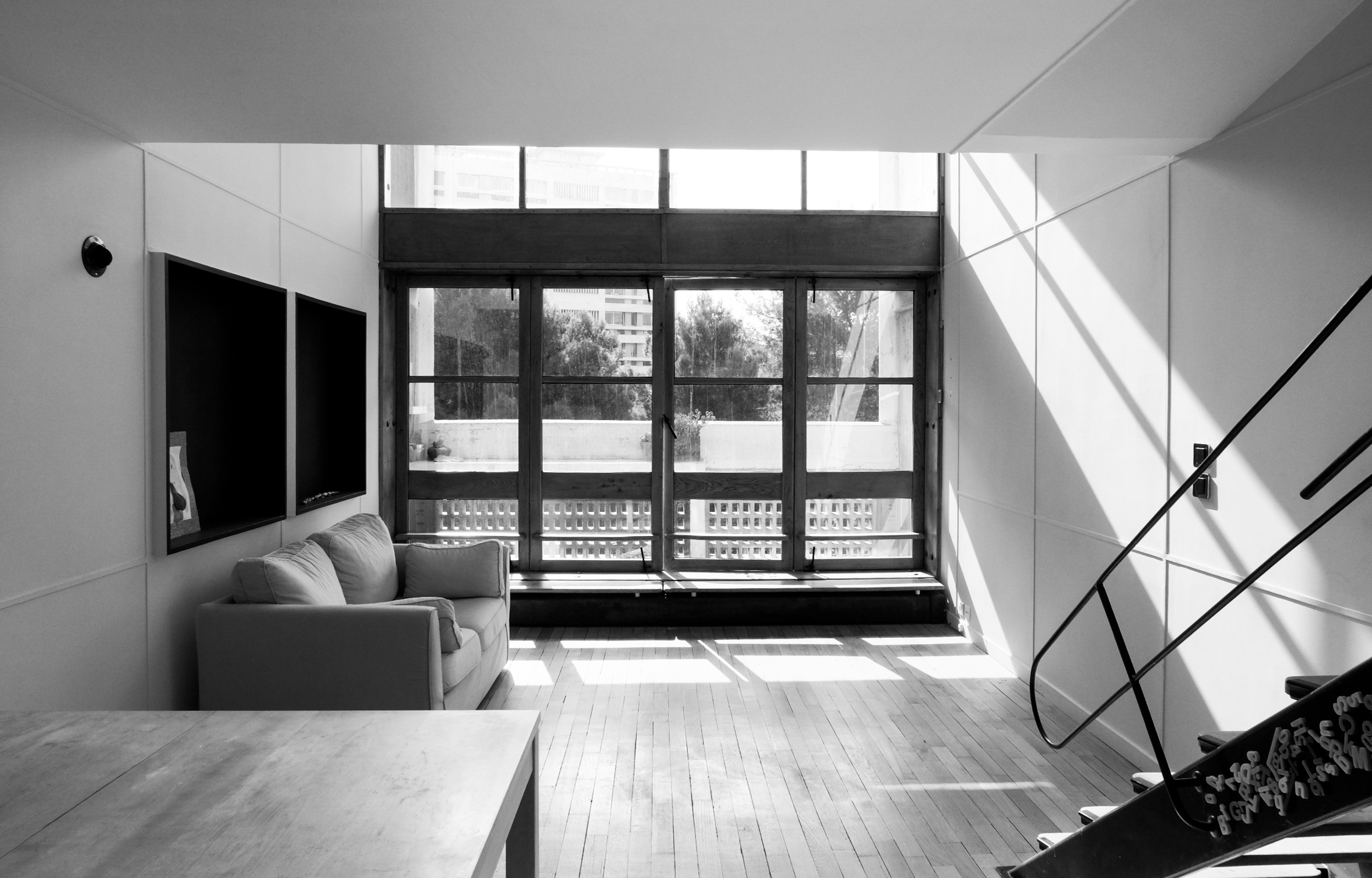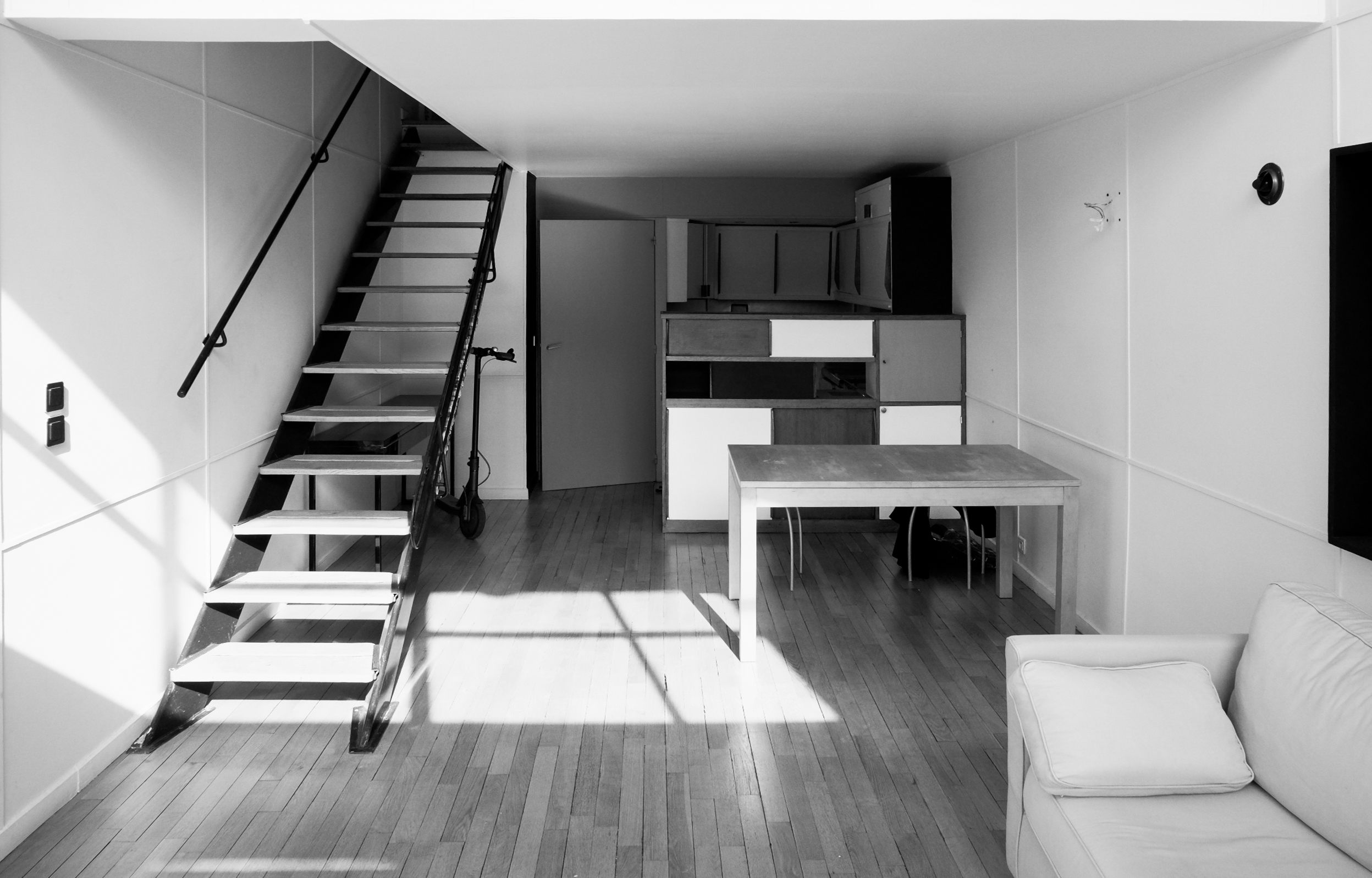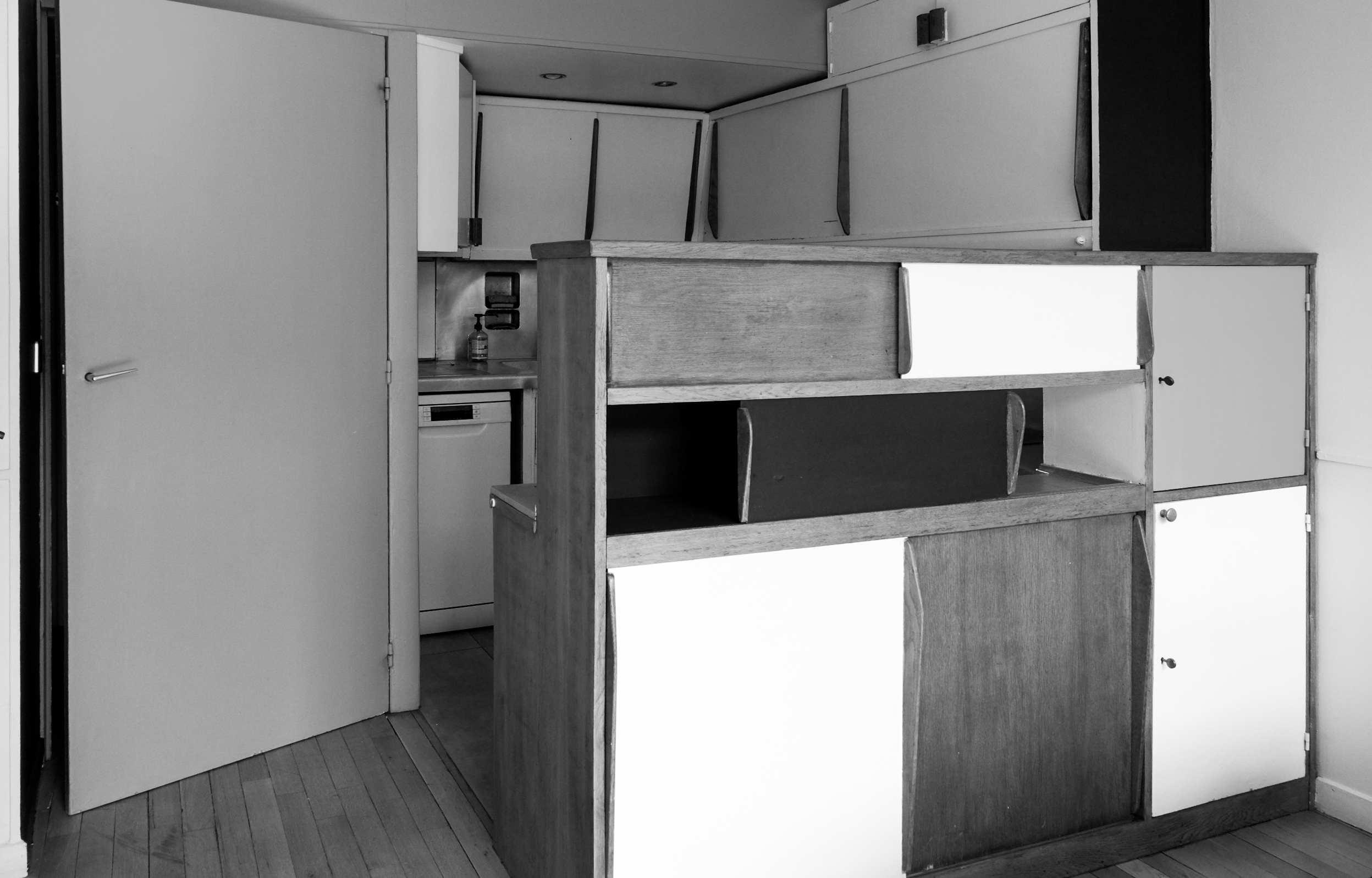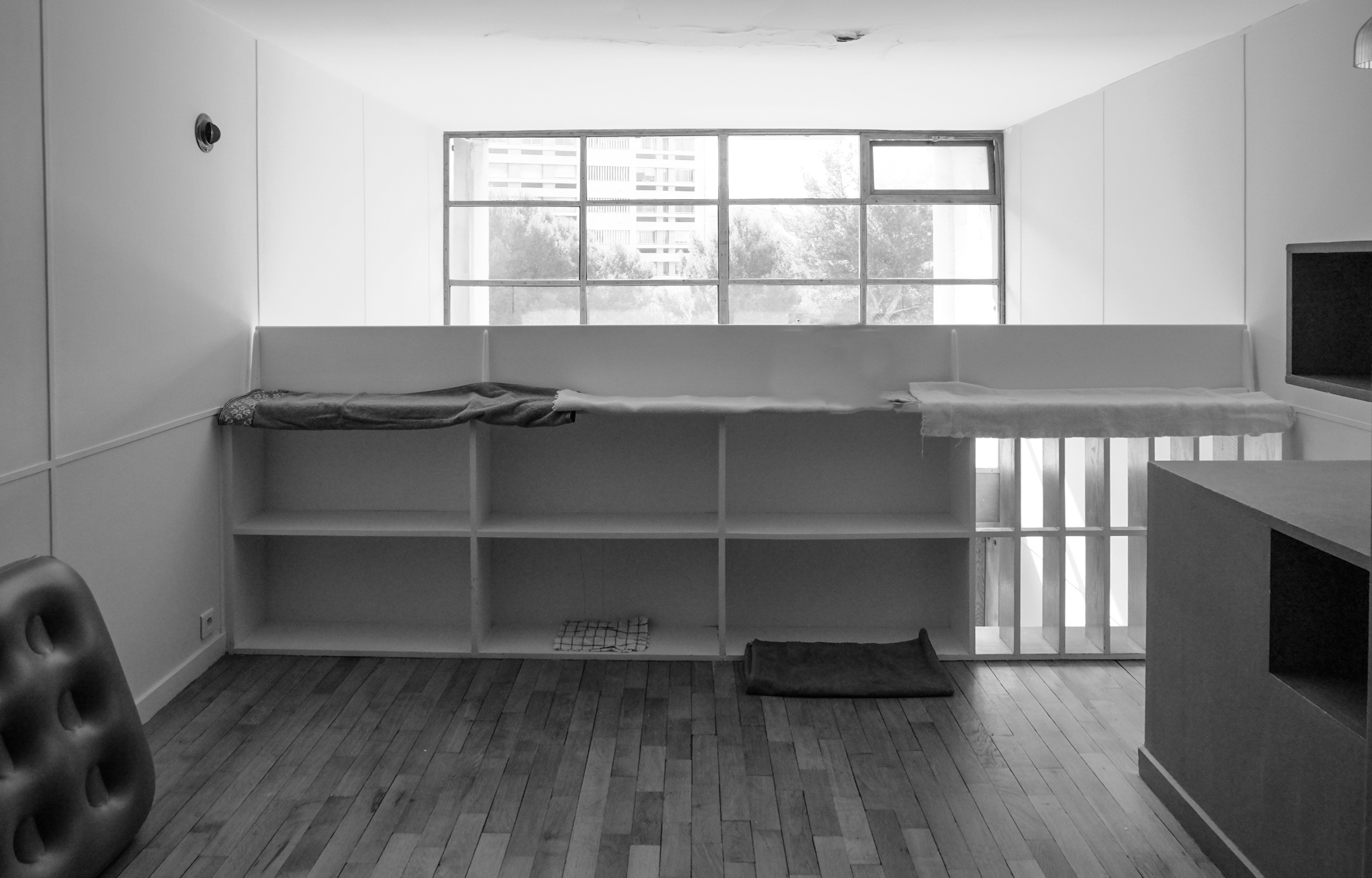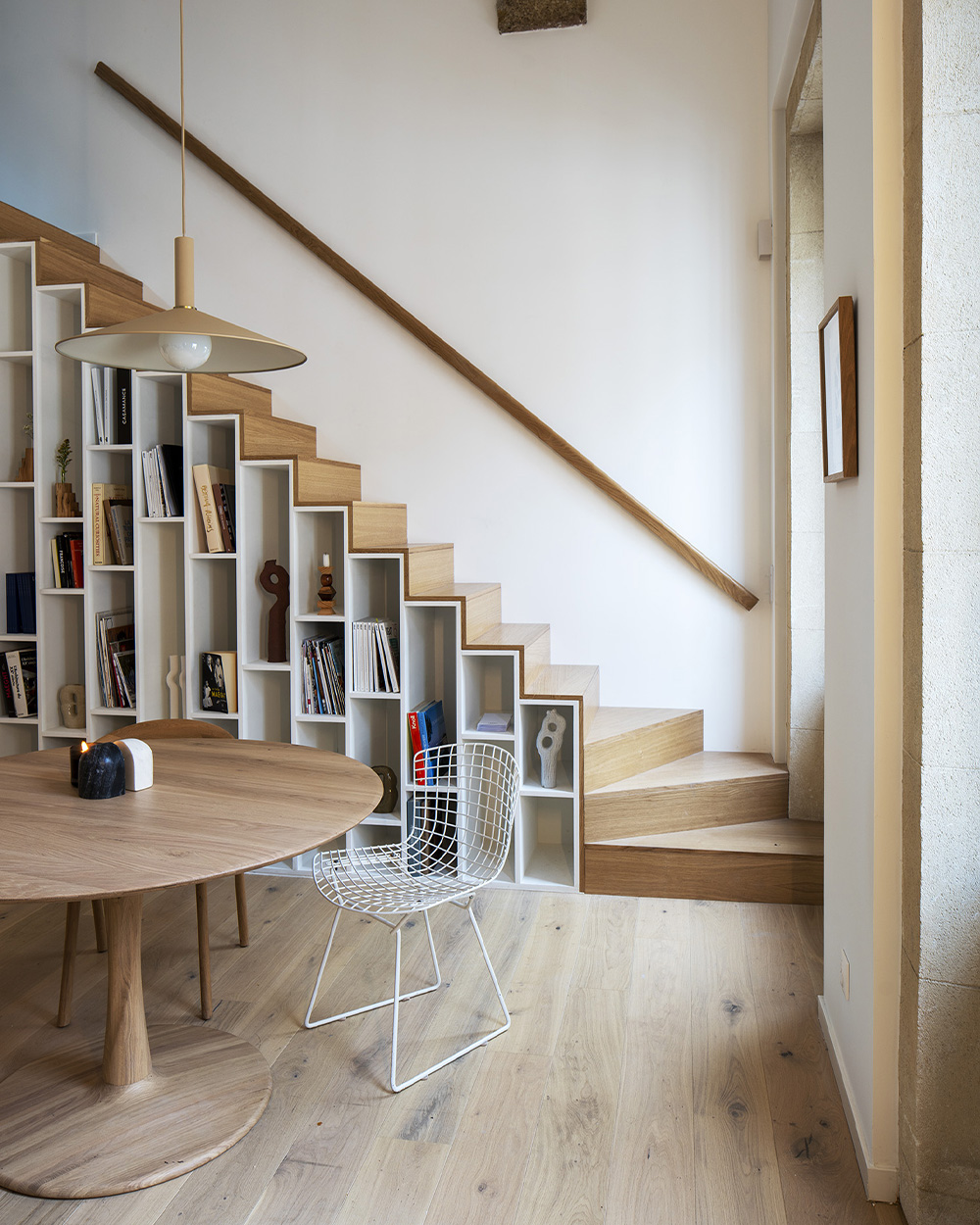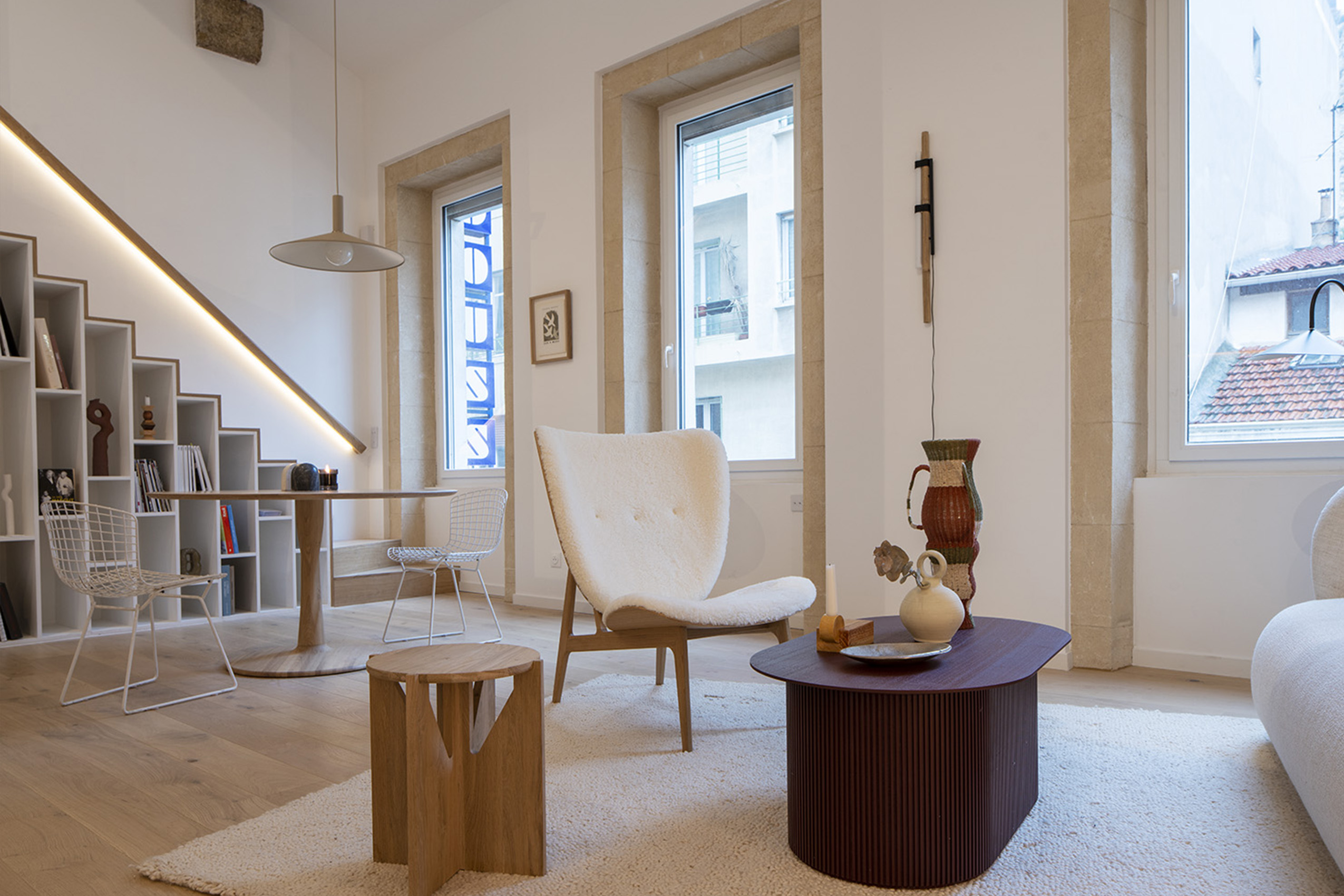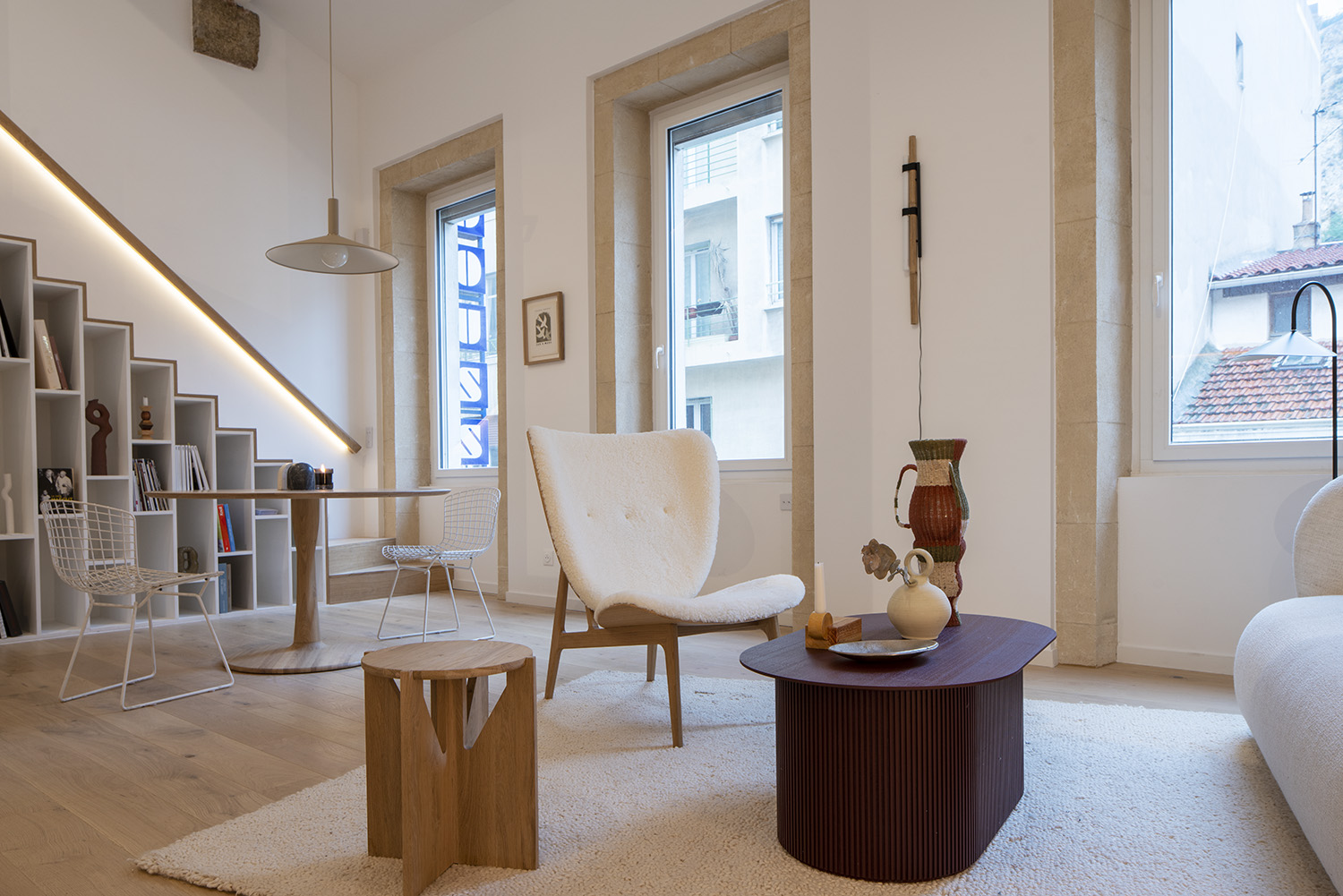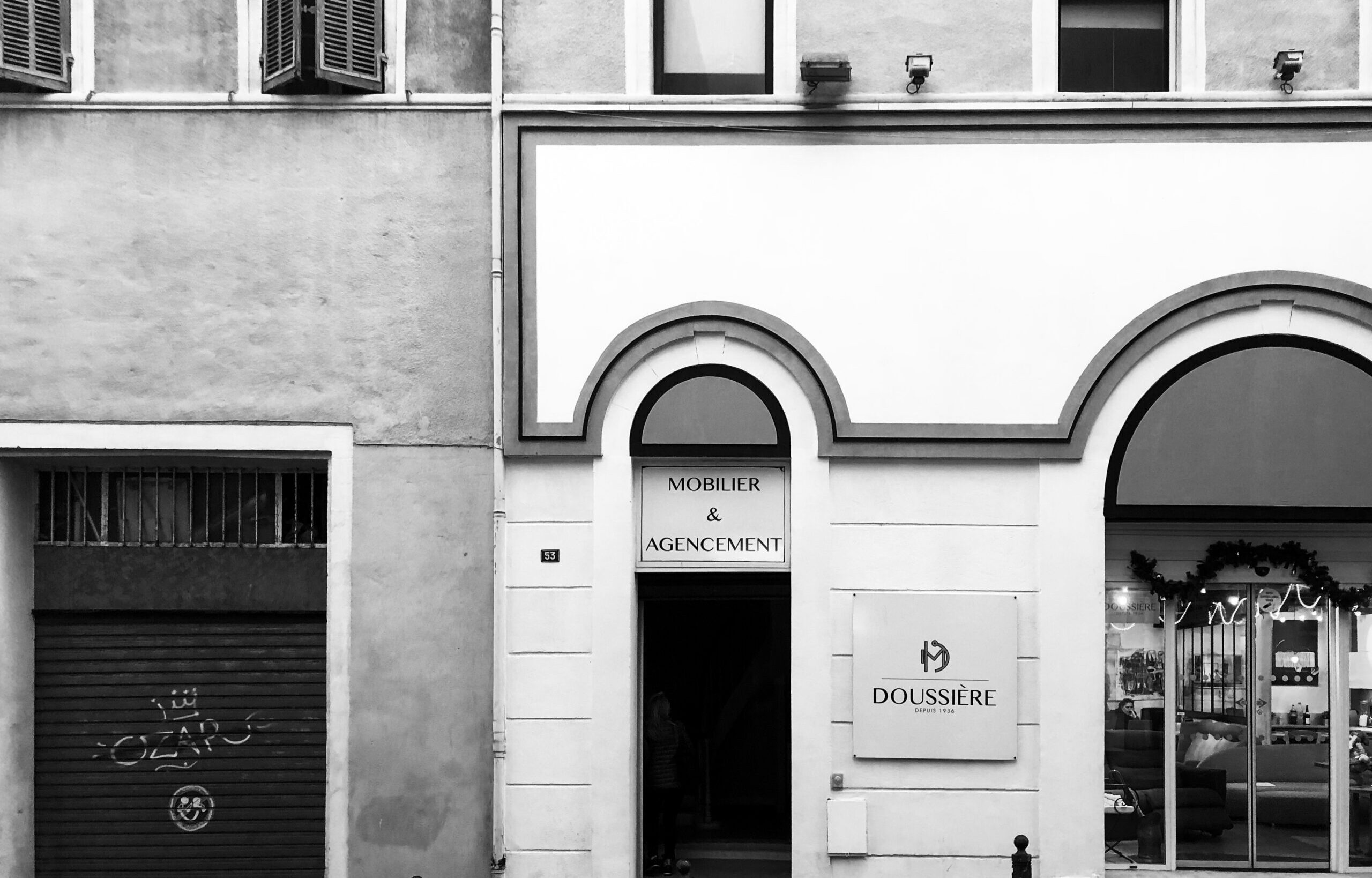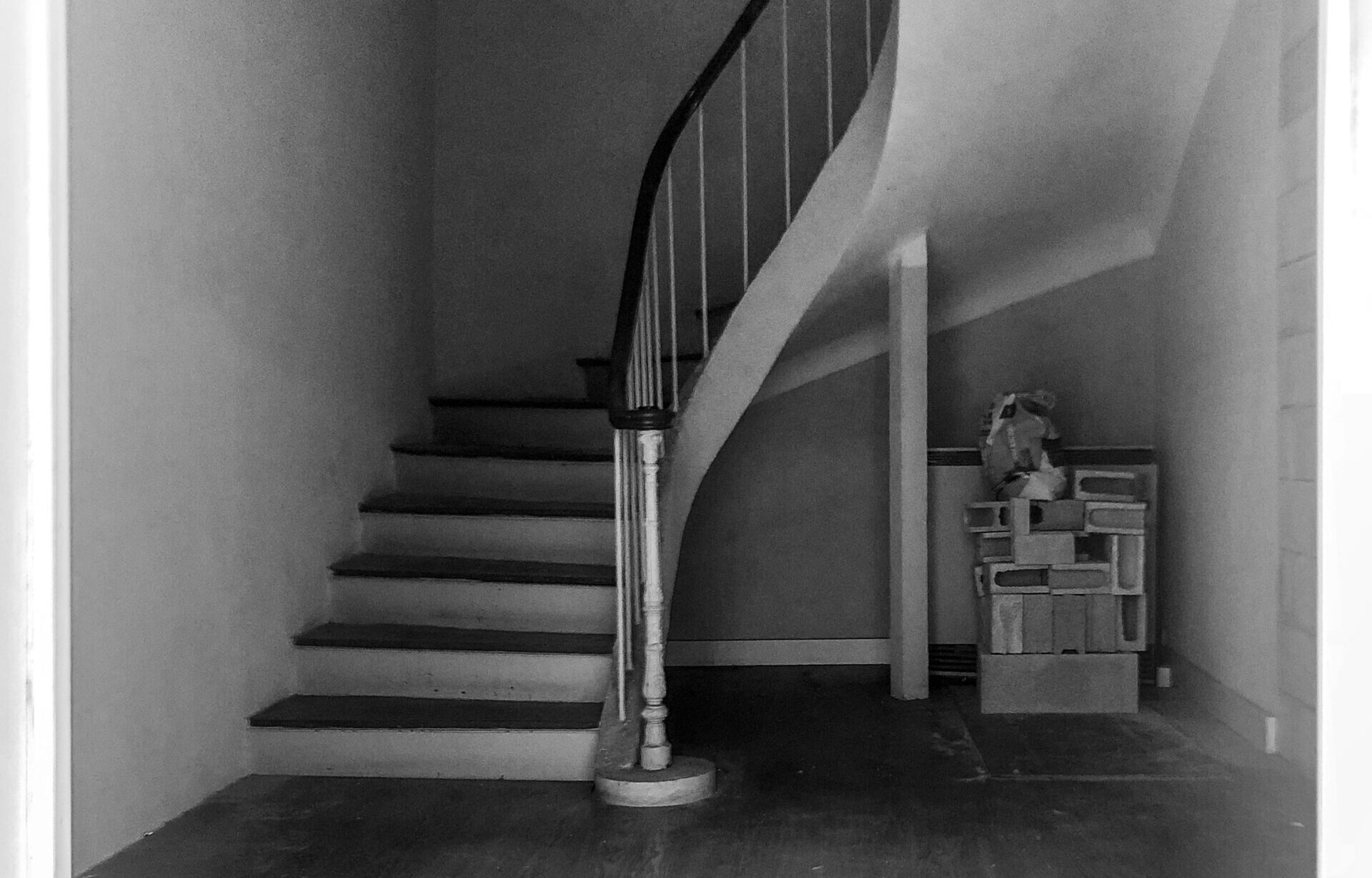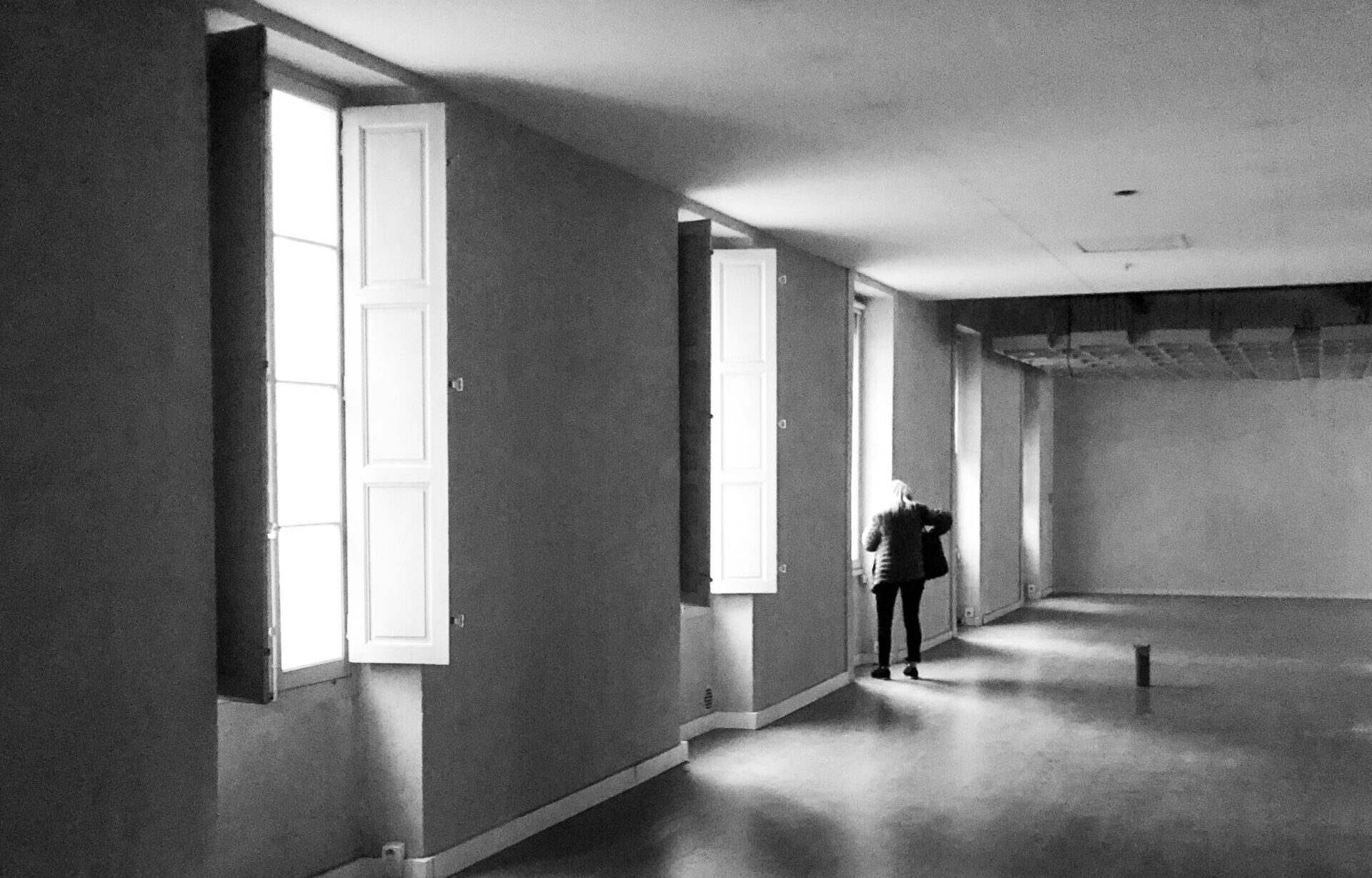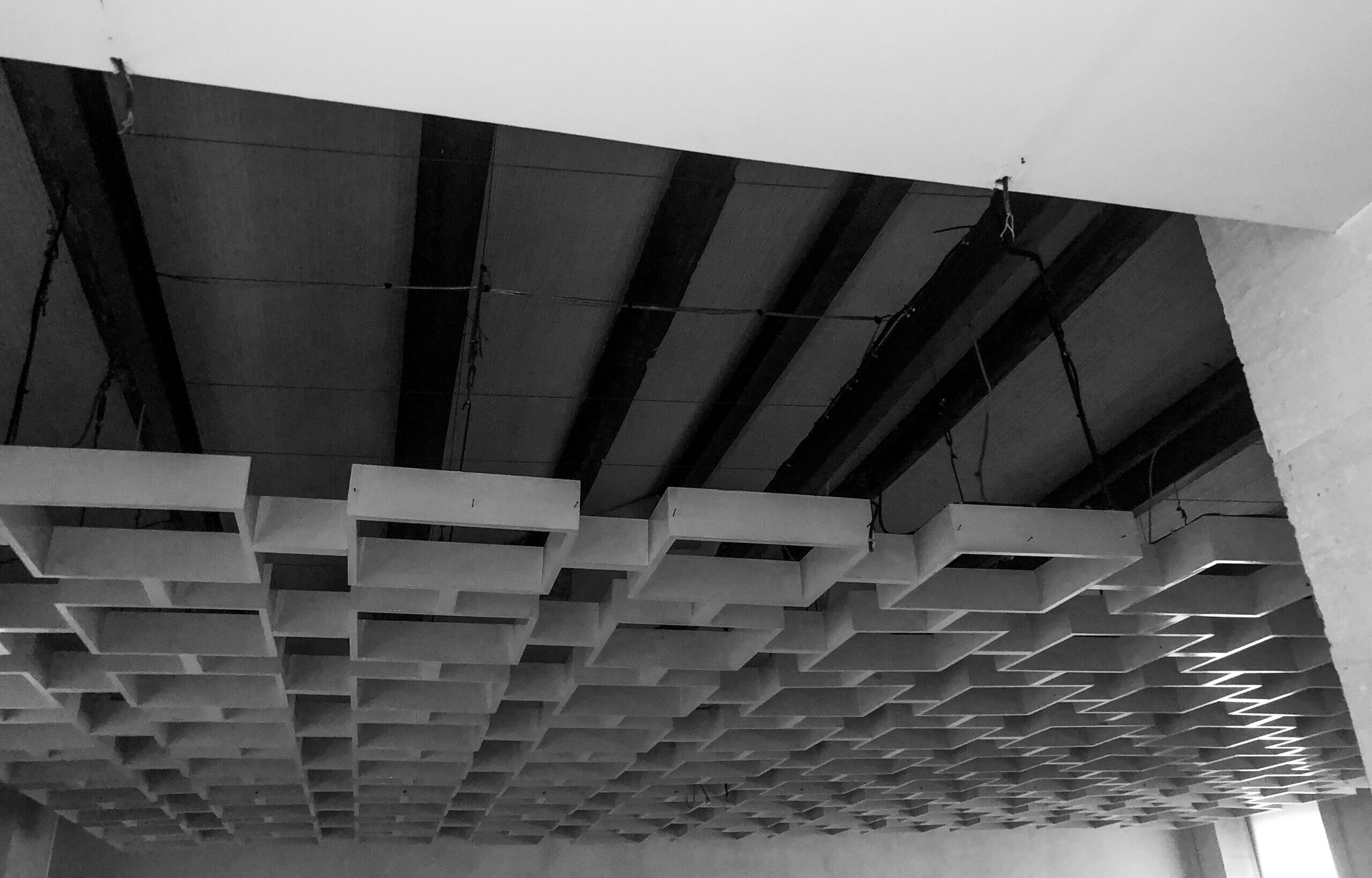Without fundamentally modifying the volumes of the apartment, the work consisted above all in a refreshment in all points of view (kitchen, painting, parquet floor, joineries), in order to offer to the purchasers an apartment which resembles them: an apartment with character, at the same time eclectic and audacious.

To modernize an apartment in the Cité Radieuse while preserving its soul, drawing on the work of Le Corbusier.
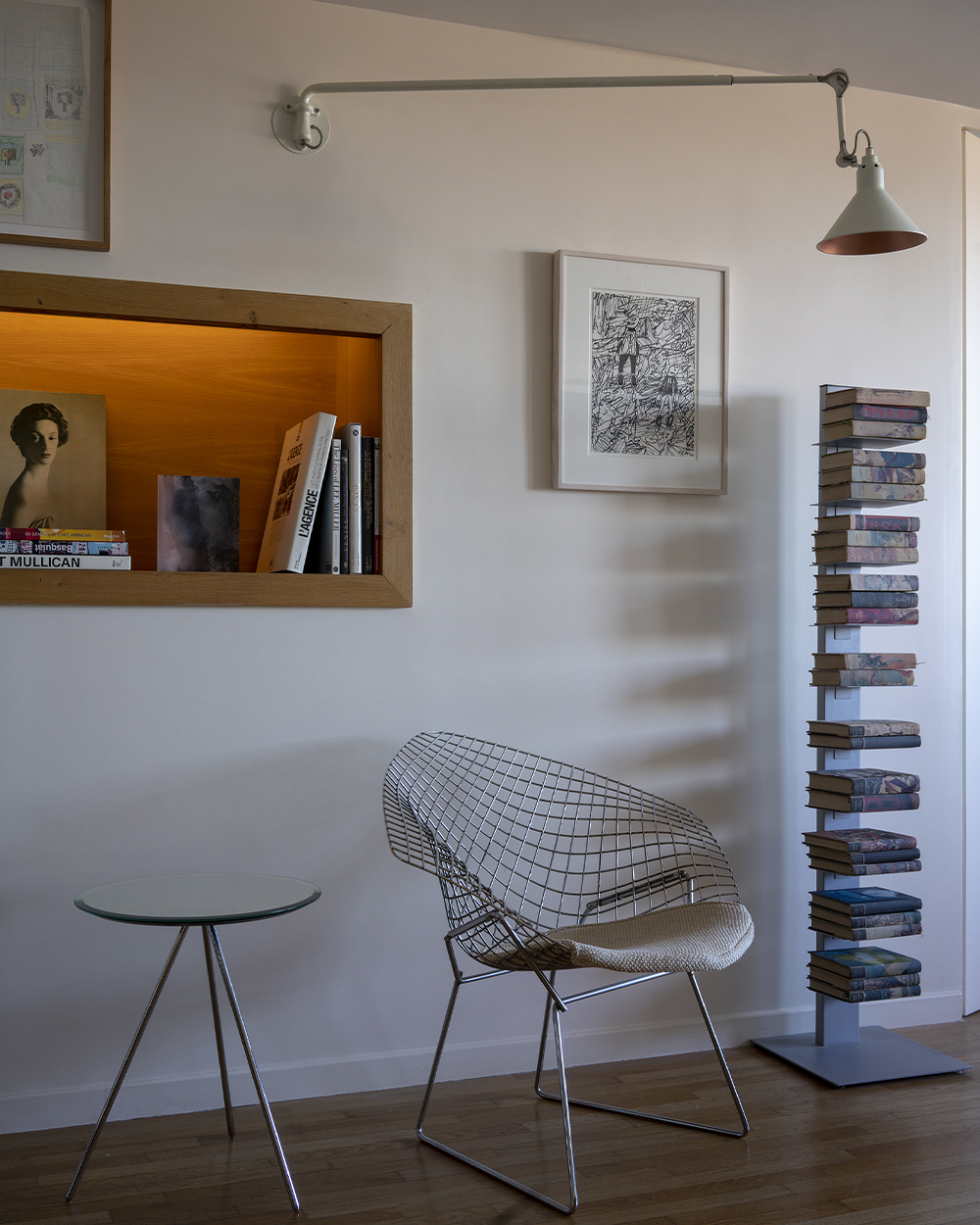


To provide a setting for the numerous works of art and designer furniture of the owners, great art lovers.

The layout has been completely redesigned to highlight and stage the couple’s works. The kitchen has been completely redesigned to be more suitable in terms of functionality, while at the same time redoing some of Le Corbusier’s and Charlotte Perriand’s characteristic kitchen elements (high cupboards, reminder of the wooden handles on the kitchen fronts, etc.).
The range of colors used in the apartment is also directly inspired by the range of paint that Le Corbusier used in Bordeaux for the Cité Frugès, whether for the kitchen, or for certain volumes that have been repainted in pink, ivory white, almond green and red.
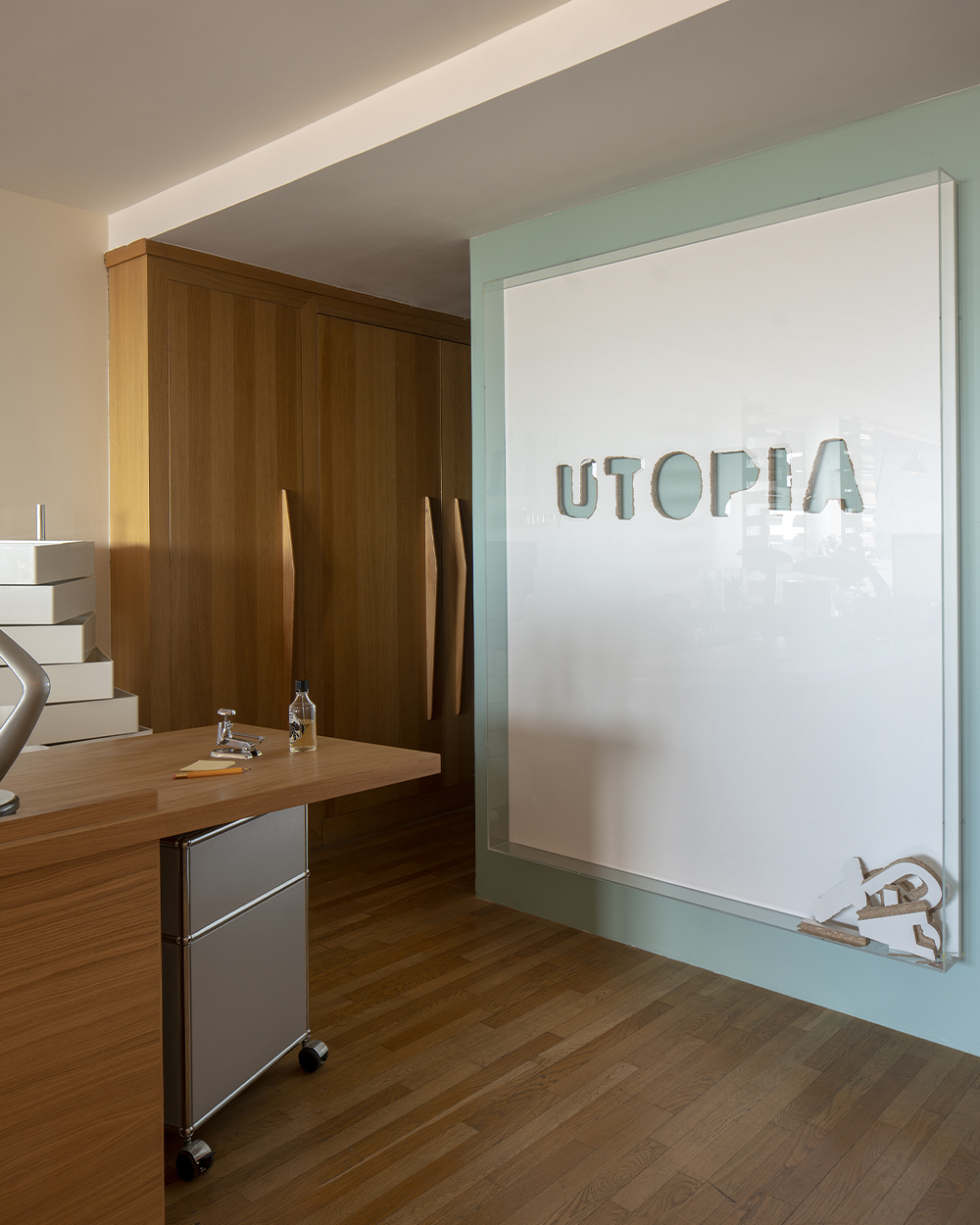
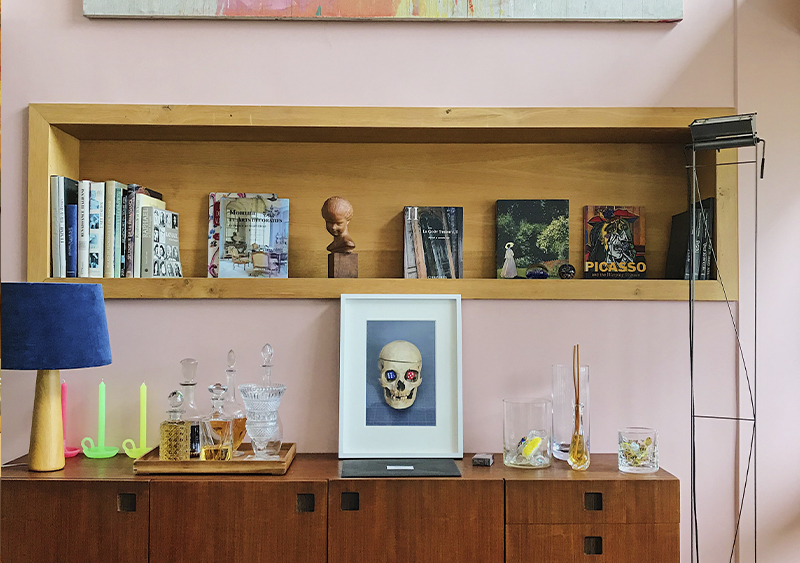
A precise renovation offering the best possible showcase for pieces and works of art!


